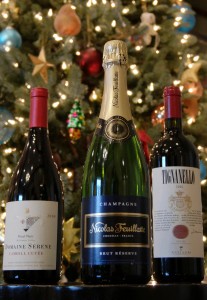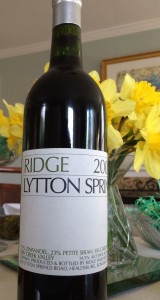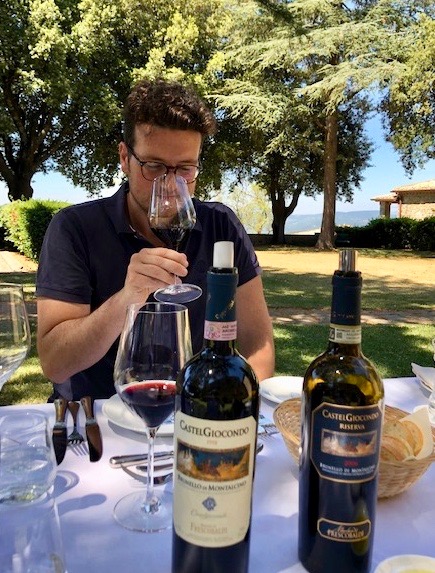Happy food, wine, and family!
December 18, 2019 by John BrownChristmas is upon us and I am psyched! So, bring on the seven fishes, the Christmas dinner and even the twelve days because I’m ready and raring to go. And, as always, I will provide you with some vinous choices to enhance your holiday meals.
Of course, my first challenge will be to weather the (sometimes literal) storm of preparing the Christmas Eve fish extravaganza. I will use the outdoor gas grill to heat up the canola oil to 350F and then begin frying cod, smelts, squid and scallops. This can be tricky if the weather is raining or snowing heavily, but I’ll get it done – with the help of my eldest grandchild who has been my sous-chef for most of his post, pre-K life.
I’ll also brine and then hot smoke a side of salmon, while my wife constructs a pasta and clam dish. And there will be cocktail shrimp and other appetizers to get our palates properly tuned up. Since most of the fish will be deep fried, I find it’s best to pair them with white wines that are medium bodied, refreshing and even thirst quenching.

You might give these bottles a try. Italian whites: Arneis; Cortese di Gavi; Greco di Tufo; and Falanghina; California Chardonnay: Cakebread Cellars; Ridge Vineyards Santa Cruz Mountains; Far Niente; and Mer Soleil.
There is no standard, traditional Christmas day meal in our country. Depending upon your religious or ethnic background, you might enjoy everything from ham to goose, to turkey to beef. In homes where the ancestral heritage derives from the British Isles, Germany or other northern European locales, we Americans tend to lean toward these culinary options: turkey; prime rib roast or filet mignon ; or baked ham as the featured main course.
If you’re preparing oven-roasted turkey as the main course on Christmas day, these medium bodied wines will pair nicely: Chateauneuf Du Pape; Rioja; California merlot, Chianti Classsico or Cotes Du Rhone.
If your Christmas dinner features baked ham with a honey glaze, you have several more options, including red, rose or even white wine. You might select: Tavel Rose from Southern France; riesling from Alsace; Sonoma Coast pinot noir; or malbec from Argentina.
At our home, my wife will dry rub a bone-in prime rib roast with garlic, kosher salt and coarsely ground black pepper. Then she’ll roast it in the oven until it’s medium rare. Here are the wines I’m considering to accompany the rib roast: 2004 Ducru Beaucaillou (Bordeaux red); 2007 La Massa (Italian super Tuscan red); or 2016 Ridge Lytton Springs Vineyard Zinfandel.
Over the next two weeks, you will drink more than half of your yearly total consumption of sparkling wine. It could be Champagne or other sparklers like those produced using the Champagne method or by other vinous means of eliciting bubbles in still wine. So, whether it’s Brut Champagne, Cava from Spain, Prosecco from Italy or Cremant from Alsace, the apex of sparkling wine consumption will occur between Christmas and the New Year.
There is nothing quite like Champagne to ring in the New Year. Give one or more of these Champagnes a try: Charles Heidsieck Brut Millésime; Krug Grande Cuvee Brut; Nicholas Feuillatte “Blue Label” Brut; Veuve Cliquot Brut; and Piper-Heidesieck Brut Cuvée.
Sparkling wine from regions other than Champagne: Gusbourne Brut Reserve (England); Mumm Napa Cuvee, Roderer Estate Brut Anderson Valley and Iron Horse Russian Cuvee ( all from California); Lucien Albrecht Cremant d’Alsace (France); Segura Viudas Reserva (Spain); La Marca Prosecco (Italy); and Gruet Blanc de Noirs (New Mexico
Have a very Merry Christmas, a Happy Hanukkah and a prosperous New Year!













